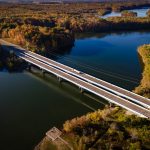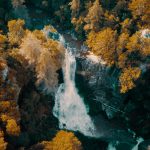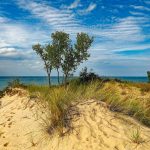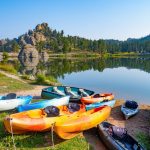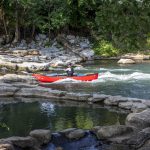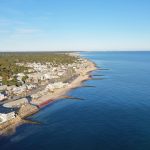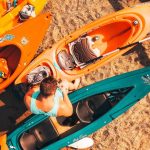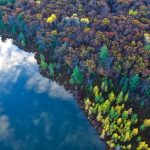Welcome to the Buckeye State, the Birthplace of Aviation, the Mother of Presidents, and, of course, home to some of the best kayaking spots in the country!
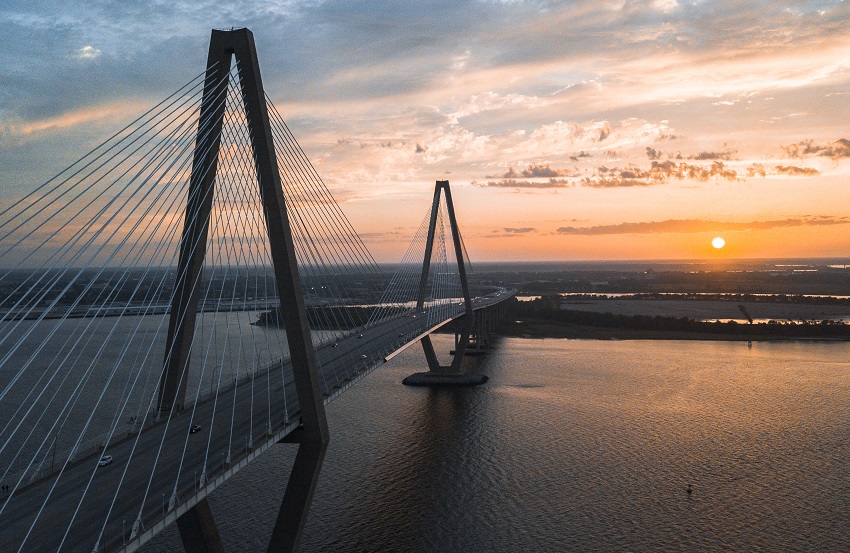
South Carolina is home to some truly spectacular destinations to spend your holiday or even just a weekend getaway. Delicious food, some of the oldest culture in the United States, and gorgeous scenery in abundance!
But it’s often the kayaking that brings people from around the country to visit the Palmetto State, and keeps them coming back time and again.
With so many rivers, lakes, creeks, and coastal inlets, there’s never a boring day out paddling.
Check out the list of best places to go kayaking in South Carolina below, along with the information we’ve gathered on how to find great kayak tours, what kayaking laws you need to follow, and the answers to a few commonly asked questions.
By the end of this page, you’ll be ready to take your next kayaking adventure to a whole new level!
15 Best Places to Go Kayaking in South Carolina
1. Chattooga River
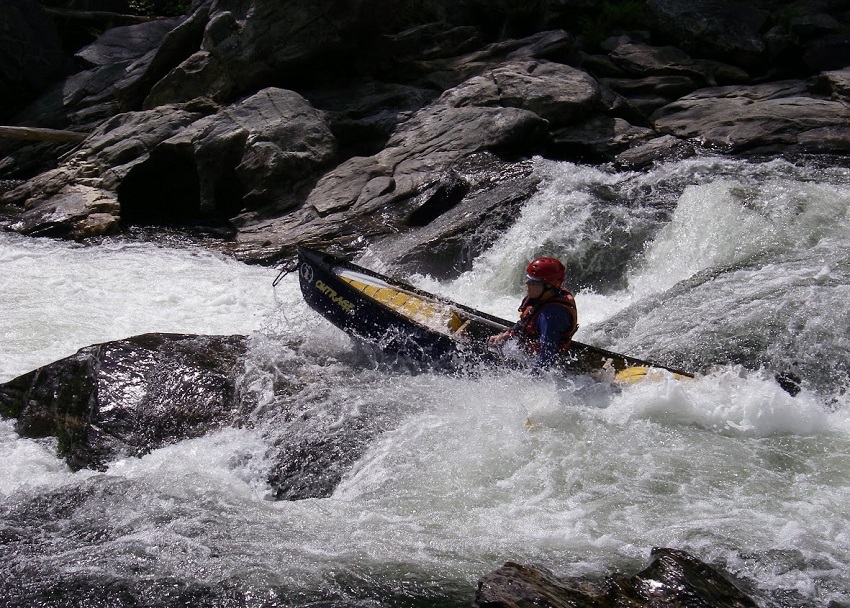
Whitewater kayakers come from all around the country to try their hands at the Chattooga River, including the most famous rapids in the state: the Five Falls. Be warned that it’s only suited to advanced and expert-level kayakers, and only three companies are officially licensed to run trips down the river. But you’ll love how wild and untamed it feels, not to mention the raw, roaring power of the rapids. Movie buffs will be thrilled to know it was here that the movie Deliverance was filmed!
The Chattooga River offers some of South Carolina’s best kayaking, especially for those who want a truly epic, fast-paced water adventure. Starting high in the Blue Ridge Mountains, it descends toward South Carolina’s border with Georgia, and from there runs for another 50 wild miles, descending an average of 49 feet per mile. The result: fast flow, churning rapids, and a whole heck of a lot of fun.
2. Capers Island
Capers Island, better known as Capers Island Heritage Preserve, is an amazing destination for paddlers who also happen to be nature lovers. Located off the coast of South Carolina just north of Charleston, it’s home to a variety of animals—everything from alligators to sea turtles to a wide range of bird species. Bring your binoculars and your log book, because there’s plenty to see while here. Plus, there are oyster beds, salt marshes, maritime uplands, and even a boneyard beach where the ocean’s advance has eroded the forest enough that only dead, salt-bleached trees remain.
The trip can be fairly easy, especially if you manage to catch the tide going out. The island is just four miles off the shore, and only accessible via boat (or kayak), but you’ll need to make sure to get a permit from the Department of Natural Resources before heading out.
3. Table Rock State Park
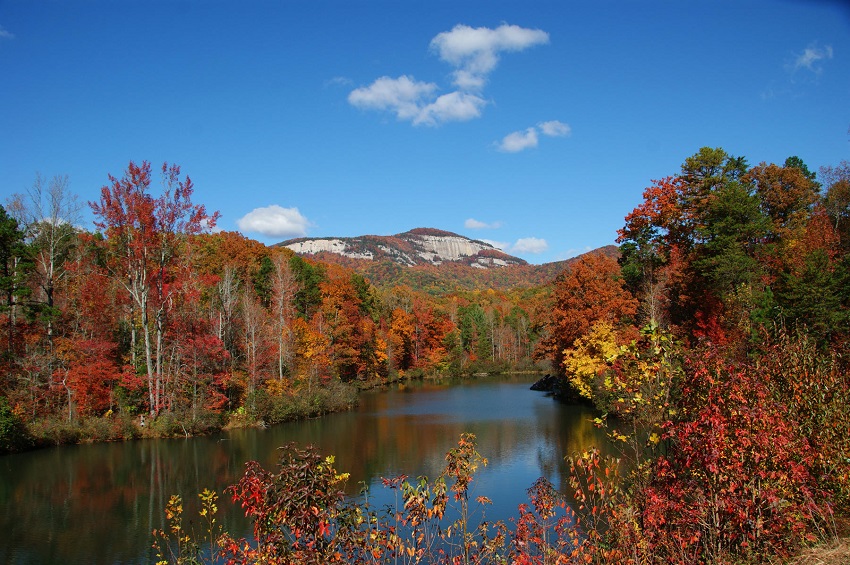
Located near the South Carolina city of Pickens, Table Rock State Park is home to a quiet, calm lake where newbies can dip their paddles in the water for the first time. Kayaks are cheap to rent here—just $5 for a half-hour—and you can test your hand at the new skill using gear you know is well-maintained. Or feel free to bring your own kayak and enjoy paddling around the lake for a few hours.
What makes this particular place so great for beginners is that no motorized boats are allowed on the water, so you’ll have it all to yourself and the paddleboarders. Plus, the water stays beautifully clean, and it will feel like swimming and paddling in paradise. All the while, you can enjoy the stunning view of Table Rock itself, with its bare face staring down on you and the water in all its majesty.
4. Devil’s Fork State Park
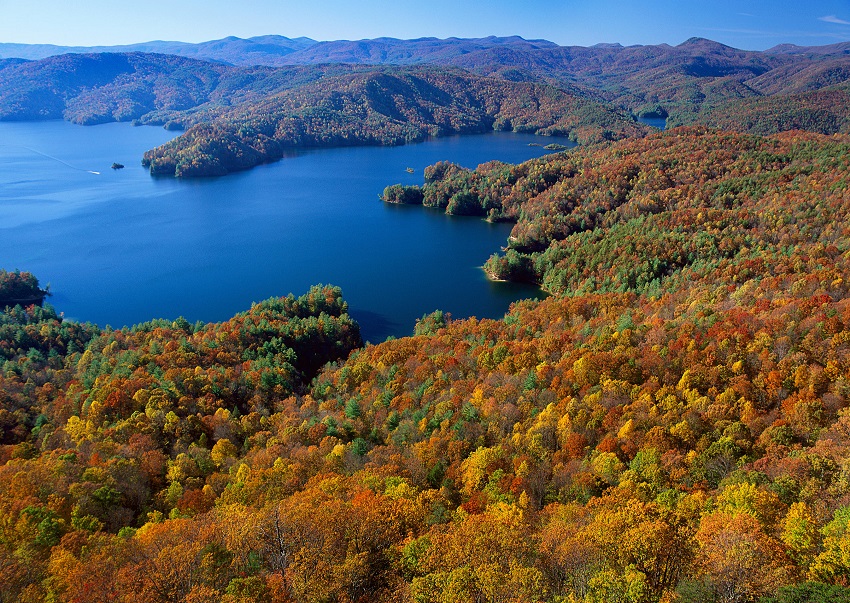
Devil’s Fork State Park is a truly spectacular destination for hikers, campers, anglers and kayakers because it’s home to Lake Jocassee. National Geographic named this lake “One of the World’s Last Great Places”, a title it more than earns thanks to its crystal clear waters and the raw, wild look of the lake.
The lake is man-made, but the area around it is almost entirely undeveloped (save for campgrounds), and the water comes direct from waterfalls and mountain streams. The water is calm and quiet, perfect for newbies, but adventure kayakers will love tackling the Jocassee Gorges, a scenic route of waterfalls and stunning views only accessible from the water. Anglers will also find this lake a great place to cast in their line in the hopes of catching some of the many trout that make their home here.
5. Waccamaw River

The Waccamaw River flows through both of the Carolinas, stretching a whopping 140 miles on its journey through the backwaters of North and South Carolina. Wildlife lovers will be thrilled to know the river cuts through multiple parks and preserves, including the Waccamaw National Wildlife Refuge and the Waccamaw River Heritage Preserve. Here, you can kayak next to gators, wild hogs, river otters, hawks, swallow-tailed kites, and other animals you’ll find in few other places around the eastern United States.
The river has plenty of put-in and take-out spots, so you can make your trip as long or short as you’d like. There are lots of campgrounds along the way, too, allowing you to spend the night as close to the water as possible. You can also rent kayaks all along the river, perfect for anyone who wants to enjoy a quick paddling voyage in the middle of a family vacation or business trip.
6. Lake Tugaloo
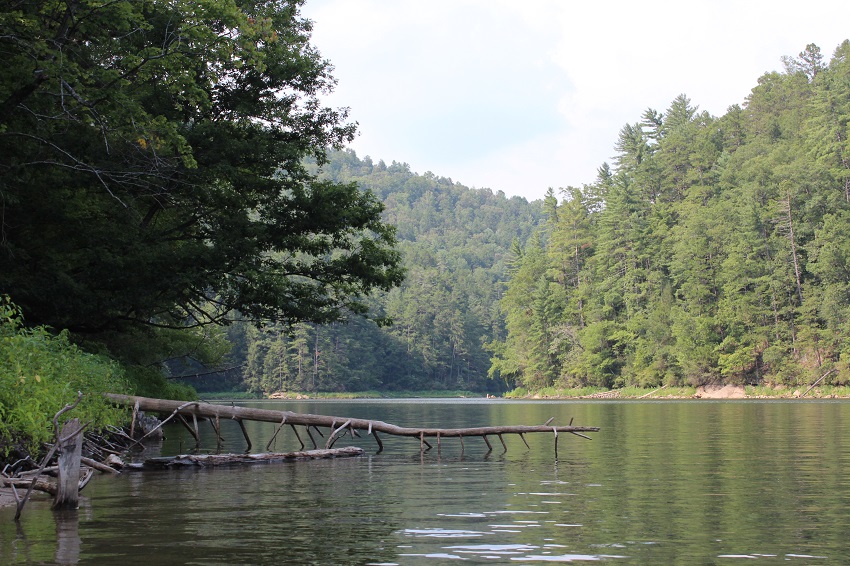
The Chattooga River empties into Lake Tugaloo, home to both the must-see Tallulah Gorge and Tugaloo Dam. The water is calm and placid, the perfect way to end your breakneck trip down Chattooga River or just someplace to relax after a long work week. The lake is large enough you can spend a day (or two) exploring it and enjoying the bright South Carolina sunshine on the sparkling waters.
Bordering the lake are two natural forests: the Chattahoochee and Sumter. You’ll find few lakes that offer more spectacular views of towering trees and the many animals that make their home there. Intermediate paddlers looking to test their paddling skills against a stronger current will find that paddling up the Chattooga River offers a suitable challenge.
7. Hilton Head
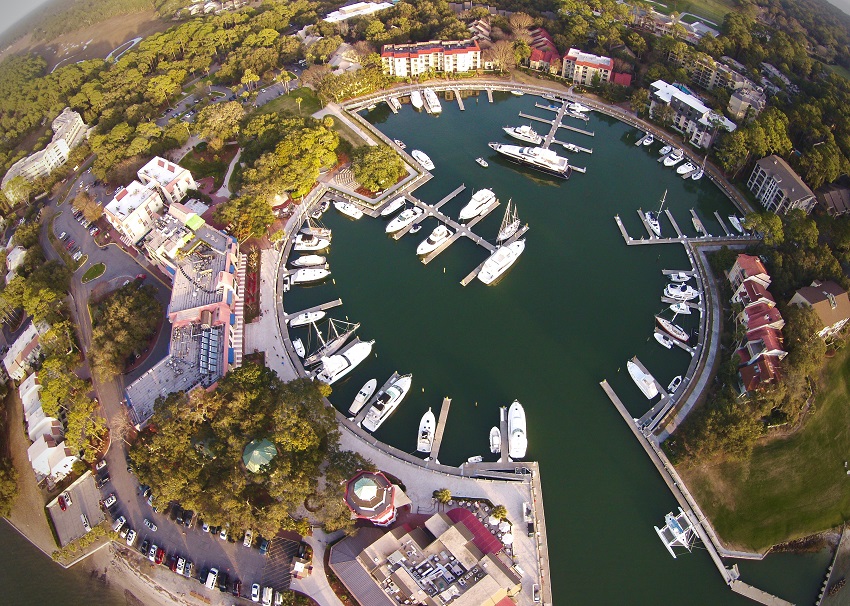
For those who want to do some island exploring and sea kayaking, Hilton Head Island is the destination for you! Located off the coast of South Carolina a short distance north of Savannah, it’s a popular vacation spot for those who want to enjoy gorgeous beaches and pristine golf courses. Kayakers, however, will find it’s a true delight to circumnavigate the island to enjoy it from the water.
The island is home to Pinckney Island Wildlife Refuge, where you can paddle with mammals, birds, and reptiles galore. The 11-mile flatwater lagoon offers newbies a great place to practice their skills sheltered from the ocean’s currents until they’re ready to venture out to sea. Though the island itself tends to be busy, you’ll have the surrounding waters largely to yourself, and the views from the sea are spectacular.
8. Shem Creek
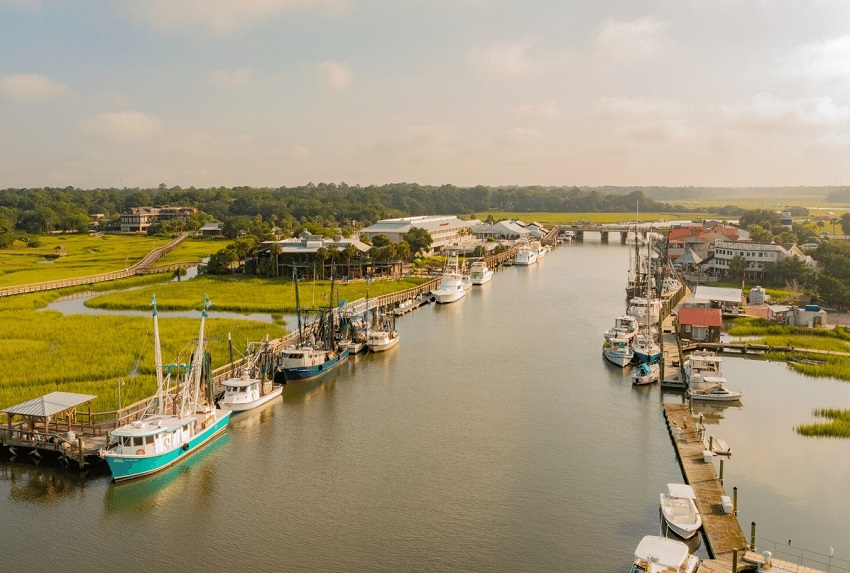
If you’re in Charleston on a work trip or holiday and only have a few hours to spend paddling, a quick visit to Shem Creek will be just what you need. It’s located close enough to the city that you can get there in a matter of minutes, and out-of-towners can rent kayaks (and paddleboards) right on the water.
From Shem Creek, it’s a quick paddle toward Charleston Harbor, where you can enjoy the views of some of the city’s most famous landmarks from the water. You can even disembark from your kayak to grab a quick lunch and take a stroll on the boardwalk. Or, if you prefer to venture into nature, head toward the marshy inlets where you can spot wildlife of all shapes, sizes, colors, and species on the calm waters.
9. Lake Moultrie
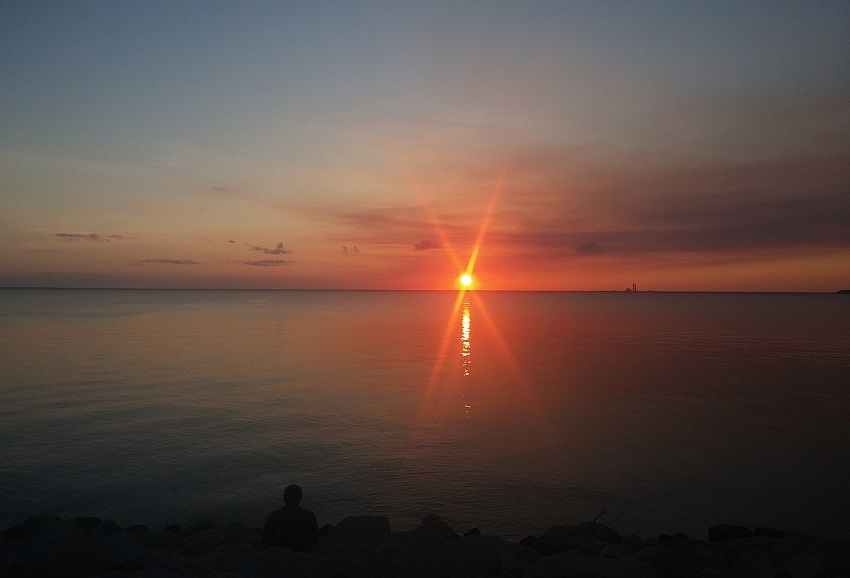
Located roughly 40 miles north of Charleston, Lake Moultrie makes for a great day trip for newbies and adventure kayakers alike. The lake spans an impressive 60,000 acres, with paddling options for everyone. Newbies and families may prefer to stay near the shores, but those looking for a bit of adventure will venture through the Jungle paddling trail that cuts through swampy waters (part of the Berkeley Blueways) that are home to flora and fauna unique to this part of the country.
Here, you can swim alongside alligators, navigate around massive clusters of water lilies, watch wading birds hunting for fish, and so much more. The lake itself may be busy with boats during the peak paddling season, but the Jungle trail is too shallow and narrow to accommodate larger vessels, so you’ll have it all to yourself. Anglers will find fish aplenty here, too: stripers, largemouth bass, catfish, and more. In fact, both the largest Black Crappie ever caught in South Carolina and the world’s largest catfish were caught here.
10. 4 Holes Swamp
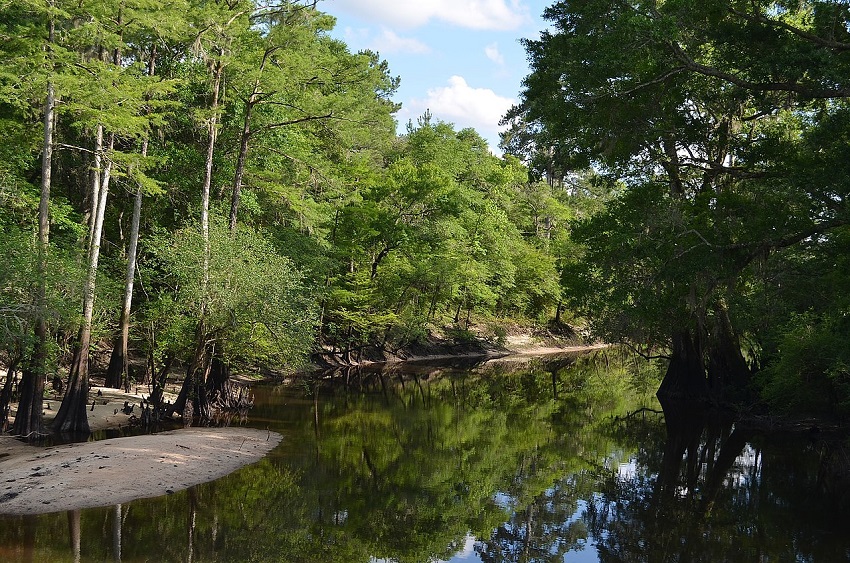
The name alone just rings of adventure, doesn’t it? The 4 Holes Swamp is a spectacular destination for those who want to experience a deep swamp first-hand. Much of the area is undeveloped and utterly pristine, home to rugged wilderness and wildlife galore. Keep a sharp eye out for water snakes, alligators, birds of myriad species, and gorgeous-and-bizarre flowers while paddling around the swamp.
The trip through the swamp is fairly easy, save for a few spots where it narrows on its way between the tupelo and cypress trees. You definitely want to go in the company of a tour guide or someone familiar with the 4 Holes Swamp specifically, because it’s far too easy to get lost.
11. Santee Coastal Reserve
Located in the coastal waters of eastern Charleston County, the Santee Coastal Reserve spans a magnificent 24,000 acres, and is a designated Wildlife Management Area where you can find all manner of wildlife with few people to interrupt your paddling trip.
Fair warning: the paddling spots are fairly remote and often out of cell service, so you’ll definitely want to pack a GPS device to keep you from getting lost. The myriad creeks and swamps around the Santee Coastal Reserve offer countless fascinating places to explore, but be aware that you’re traveling on protected wetland habitats.
12. Cedar Creek
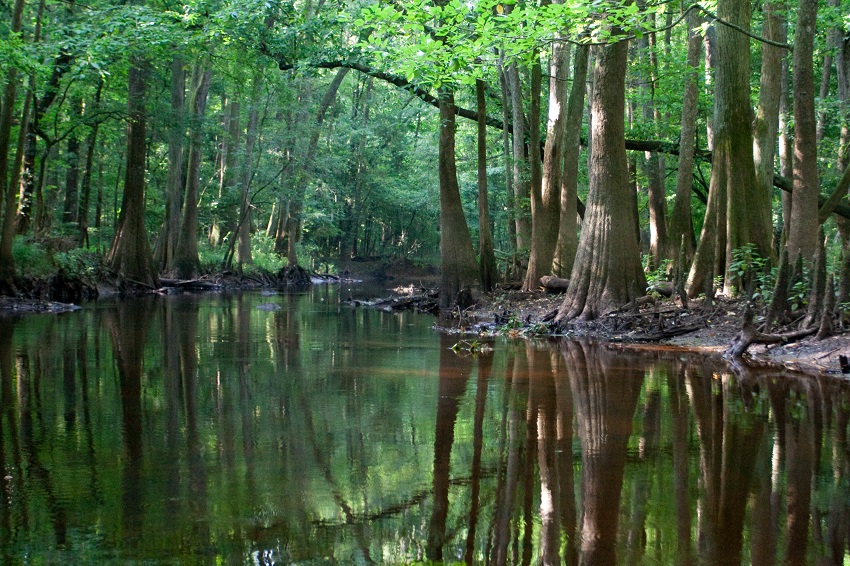
Congaree National Park is home to Cedar Creek, one of the best destinations for adventure paddlers who want an exhilarating trip through shallow, narrow waterways. Throughout most of the year, the water is around 4 feet deep, with obstacles—rocks, felled trees, and low-hanging branches—that will challenge your paddling skills. Here, you’ll be able to practice your portage skills, or be forced to lie down flat to avoid the obstacles.
Prepare for lots of bugs (bring plenty of bug spray) as you paddle the swamp, and make sure you’ve got a good creek trail map to guide you on your journey. There are plenty of side creeks to explore, some even offering shortcuts and better views, but they may be impassable depending on the water level. Anglers will find no end of water holes to drop a line for the many fish that make their home here, while animal lovers had best keep a sharp lookout for the wild hogs and white-tailed deer that roam the forests around the creek.
13. Goodale State Park
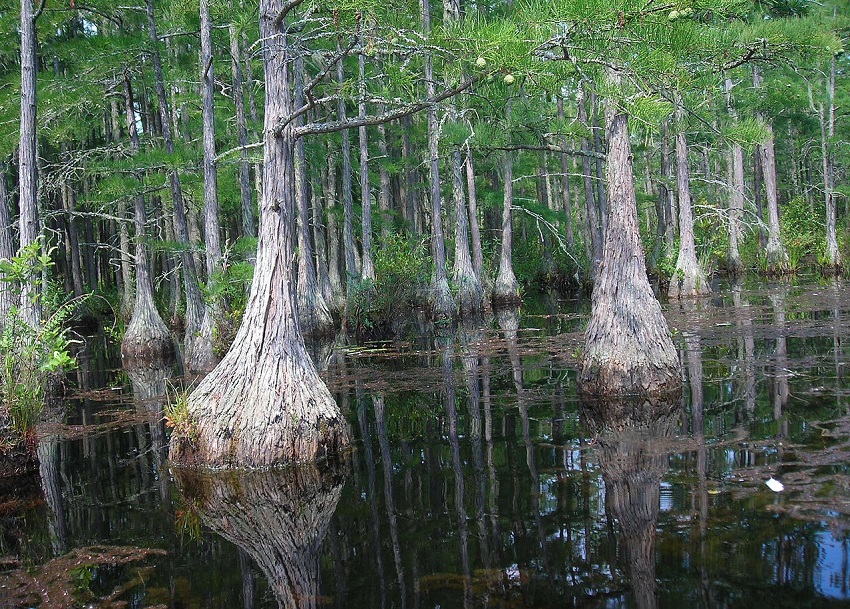
If you’re the sort of paddler who likes to stay well away from the more popular destinations and explore lesser-know, wilder waterways, you’ll love the Canoe Trail at Goodale State Park. It stretches a short 3 miles, but it runs through calm waters that cut between bald cypress forests and serves as home to gators, great blue herons, and wildlife aplenty.
You’d do well to bring your own kayak, especially if you’re looking to test out your kayak-handling skills in the often-narrow waterways. However, you can rent both canoes and kayaks in the state park, a great fallback option if you can’t pack your own gear from home.
14. Catawba River
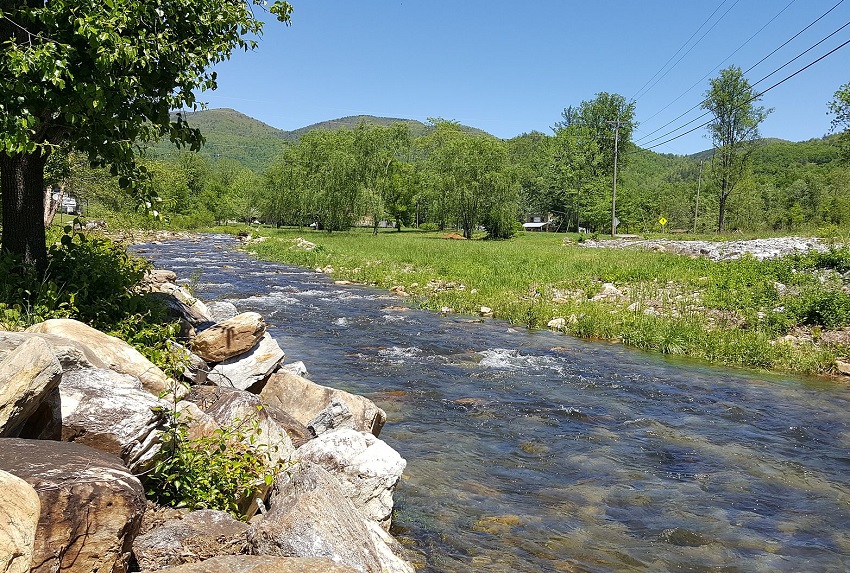
The Catawba River is an epic destination for both recreational and newbie whitewater paddlers alike. Along the 200-mile stretch of river, you can find stretches of rapids and shoals that will put your basic knowledge of whitewater paddling to the test without presenting any real dangers, as well as plenty of calm, slow-moving flatwaters with a lazy current to carry you along downstream.
There is wildlife in abundance along the riverbanks, including wild turkeys, bald eagles, beavers, otters, and deer. If you’re paddling the river during the months of May and June, you may be lucky enough to spot the rare spider lily flowers in full bloom.
15. Lake Juniper

Pay a visit to Cheraw State Park for a truly exceptional experience. Sure, the park may not seem like much at first glance—it’s small, facilities are simple, and there’s not much camping space—but head out on the water and paddle southwest until you reach the bizarre “black waters” that cut through the looming cypress forests. You’ll feel a strange reverence as you paddle along between the enormous trees, and it’s guaranteed to be an adventure like no other.
Just be warned: conditions during the heat of the day can turn sweltering from the heat and humidity, and there will be bugs in droves out. Be here first thing in the morning or in the last few hours of the day for more tolerable conditions. Pay close attention to your surroundings, because the cypress forest is home to gators and water snakes along with bald eagles, ospreys, herons, and owls.
Kayaking Tours in South Carolina
As you’ve seen above, South Carolina is home to some truly amazing kayaking destinations. From coastal waters to swamps and marshes to whitewater rapids to lakes to creeks and rivers, the state has it all!
But as you read over the descriptions, you probably noticed that a few of the kayaking destinations had some things in common. In addition to being lovely waterways with spectacular views, there were also warnings of dangers—dangers like gators, water snakes, wild hogs, difficult-to-navigate creeks, fallen trees/underwater obstacles, and creek trails where it’s easy to get lost.
Let’s be honest: many of us aren’t prepared for these sorts of risks. We can handle whitewater rapids or rough ocean waves, but navigating a maze of creeks or knowing how to avoid contact with an alligator is not something you can learn just anywhere.
That’s why I highly recommend that, for many of these destinations, you go as park of a kayaking tour.
Signing up for kayaking tours in South Carolina means you’ll be paddling with an expert who is well-versed in the risks and dangers of the specific waterway you’ll be enjoying, including the wildlife that calls it home and the obstacles it presents.
Having a local expert guide you is the best way to stay safe, prevent dangerous interactions with predatory wildlife, and avoid getting lost. It’s just the smart way to paddle!
Here are a few of the best-rated and most popular kayak tours in South Carolina:
- Charleston Kayak Company (tours of swamps and estuaries around Charleston)
- J&L Kayaking (tours off the shore of North Myrtle Beach)
- Sea Kayak Carolina (tours Shem Creek, the waters off the shore of Charleston, even custom tours)
- Kayak Hilton Head (tours around Hilton Head Island)
- Nature Adventures (tours around Charleston, including Shem Creek)
- Saluda River Rambler (tours of the Saluda River)
- Great Escapes Kayak (tours of North Myrtle Beach, Waccamaw River, Waties Island, and Cherry Grove Marsh)
- Flipper Finders (tours to find dolphins off Folly Beach)
- Beaufort Lands End Paddling (tours of the Beaufort River and Hunting Island)
More resources to find kayaking tours in South Carolina include:
- Trip Advisor – Trip Advisor will direct you to activities all around the state, depending on what city/county you’re visiting. You can read reviews from people who enjoyed the activities (or not), as well as find information on the companies leading the tours.
- Discover South Carolina – This website is run by South Carolina’s Department of Parks, Recreation, and Tourism, and has a list of some of the best paddling adventures in the state, including recommendations on tour guides.
- Viator – This website is a subsidiary of Trip Advisor, but it’s specifically focused on activities rather than the companies who run them. You’ll find lots of options for kayaking tours here!
Also, while planning your kayaking trip, take a look at this interactive map of places to go paddling nearby.
South Carolina Kayaking Laws
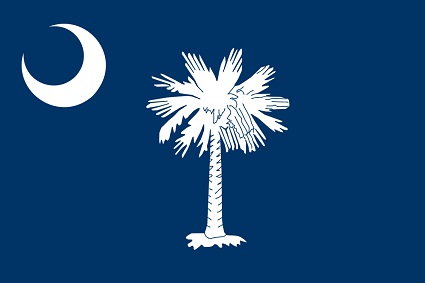
Kayaks are non-motor powered vessels
Though kayaks (and canoes) are considered “vessels” like all other watercraft, because they have no motor, they do not require registration or a permit to operate. However, some state parks will require a permit for paddling or boating, regardless of whether your vessel is motorized or not.
There is no minimum age for operating a kayak
The only exception to this rule is if your kayak has a trolling motor mounted. To operate a motorized kayak, you must be over 16 years old. Anyone under 16 must either have a boating safety certificate or be accompanied by an adult.
Kayakers must have one lifejacket on board per person
Children (no age specified) must wear the lifejacket, but adults need to ensure it’s within reach and easily accessible.
Kayakers must display lights at “low visibility times”
Between sunrise and sunset, as well as times of low visibility (such as fog), kayaks must display at least a lantern with a white light. You can check various affordable devices in our review here.
Kayakers are required carry a sound-producing device
Any vessel under 39.4 feet in length (which includes kayaks) must carry at least one sound-producing device, such as a whistle or air horn.
Kayaks do not need to carry visual distress signals (VDS)
Visual distress signals are only required for boats over 16 feet in length. However, if you’re paddling coastal waters, it’s still a good idea to carry VDS.
Kayakers absolutely can get a BUI
In South Carolina, you can be given a BUI (Boating Under the Influence) if you operate a vessel (motorized or non-motorized) while under the influence of drugs or alcohol. If law enforcement believes you to be visibly impaired, they can subject you to a drug or alcohol test. Anyone with a Blood Alcohol Level of above 0.08% is legally impaired and will receive a BUI.
- On your first offense, you may receive 48 hours to 30 days in jail, fines, and/or community service. You’ll lose your boating license for up to 6 months and will need to complete an Alcohol and Drug Safety Action Program.
- On your second offense, you may receive 48 hours to 1 year in jail, fines of up to $5,000, and the suspension of your boating privileges for up to 1 year.
- On your third offense, you may receive 60 days to 3 years in jail, fines from $3,500 to $6,000, and the suspension of your boating privileges for up to 2 years.
Kayaking in South Carolina FAQs
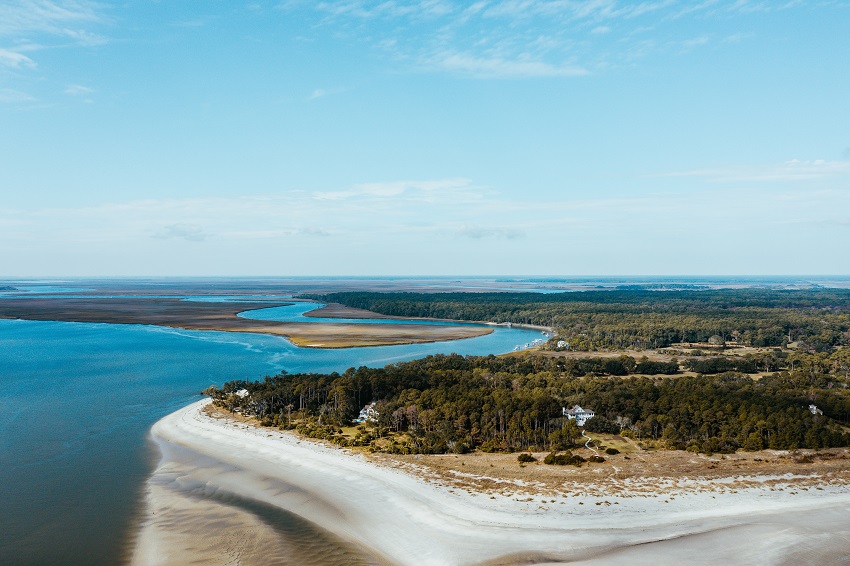
In the state of South Carolina, kayaks, paddleboards, canoes, and windsurfers are exempt from needing to obtain a license.
You absolutely can! South Carolina Parks has a comprehensive list of all the state parks where you can enjoy boating—not just kayaking, but paddleboarding, canoeing, sailing, and even motor-boating. However, be aware that some state parks will require a permit to get out on the water–not specifically for kayaks, but for all vessels and watercraft.
No, you cannot. South Carolina is a state where it is illegal to consume alcohol on board any watercraft or vessel, including motorized boats and manually powered vessels like kayaks and paddleboards.

